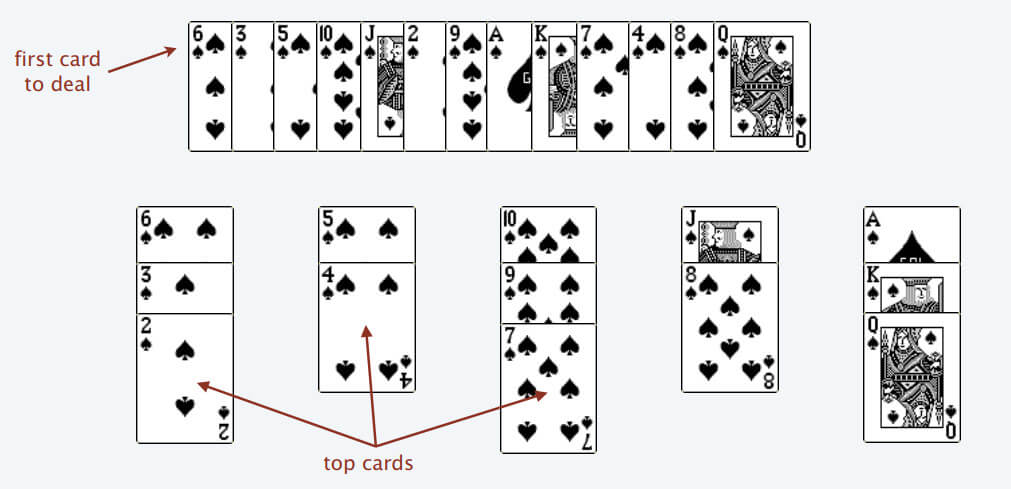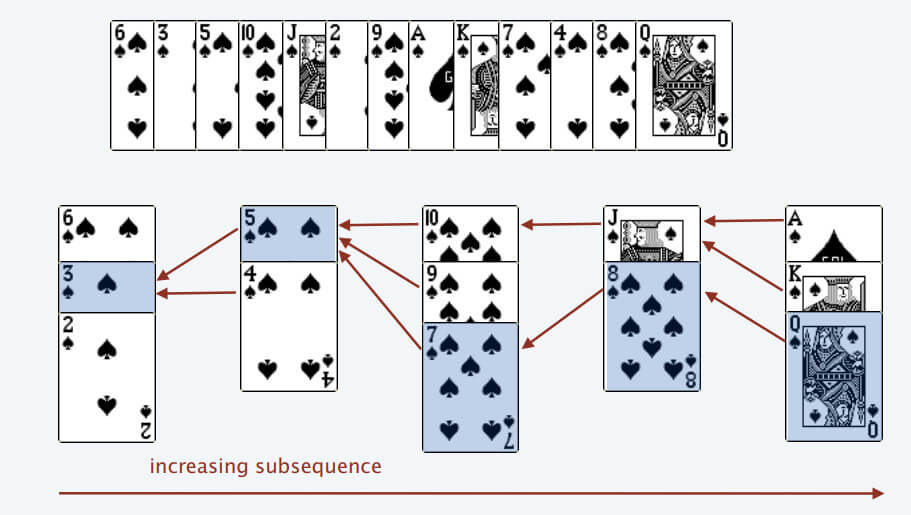🗒️ Problem
Longest Increasing Subsequence - LeetCode
Given an integer array nums,
return the length of the longest strictly increasing subsequence.
A subsequence is a sequence that can be derived from an array
by deleting some or no elements without changing the order of the remaining elements.
For example, [3,6,2,7] is a subsequence of the array [0,3,1,6,2,2,7].
Input: nums = [10,9,2,5,3,7,101,18]
Output: 4
Explanation: The longest increasing subsequence is [2,3,7,101], therefore the length is 4.
⬆️ Dynamic programming O(n^2)
dp[i]: LIS (longest increasing subsequence) length ending innums[i].
⬆️ 🍀 Intuition
- If
nums[j] < nums[i]- we can get one larger subsequence than the previous one (
dp[j)
- we can get one larger subsequence than the previous one (
for (let i = 0; i < n; i += 1) {
for (let j = 0; j < i; j += 1) {
if (nums[j] < nums[i]) dp[i] = Math.max(dp[i], dp[j] + 1);
}
}
⬆️ 🔥 bottom solution
var lengthOfLIS = function (nums) {
const n = nums.length;
const dp = Array(n).fill(1);
for (let i = 0; i < n; i += 1) {
for (let j = 0; j < i; j += 1) {
if (nums[j] < nums[i]) dp[i] = Math.max(dp[i], dp[j] + 1);
}
}
return Math.max(...dp);
};
🔎 O(nlogn) using binary search
I came to know by reading the Korean book 알라딘: 코딩 인터뷰를 위한 알고리즘 치트시트
🔎 🍀 Intuition : binary search



Same as the above card game rule.
- Cards are placed from the left to the bottom in the top row, and cards can be placed on top only if the value is smaller than the lower card.
- If the card selected in the upper row is larger than the card placed in the lower row (-> increasing sequence is created here), a new one is created on the right side of the lower row.
- If the value of the card selected in the upper row is too small to be placed in several rows in the lower row, it is placed at the far left.
- The number of columns created in the last lower row becomes the LIS length.
🔎 ✨ Algorithm
- Create an array (
piles[]) representing the lines below. - Choose a card from the far left on the top row and determine where it should be placed on the bottom row.
- At this time, use the binary search left to find the insertion point of the selected card.
- If there is a larger card (insertion point is < length), place it on the card at the corresponding location (overwrite the value of the corresponding index)
- If the insertion point is
lengthbecause there is no larger card, increase the array size and insert it at the end. - ...
- The length of the final array becomes LIS.
🔎 🔥 Solution: binary search
/**
* @param {number[]} nums
* @return {number}
*/
var lengthOfLIS = function (nums) {
const bisectLeft = (array, target) => {
const N = array.length;
let left = 0;
let right = N;
while (left < right) {
const mid = Math.floor((left + right) / 2);
if (array[mid] === target) {
right = mid;
} else if (array[mid] > target) {
right = mid;
} else if (array[mid] < target) {
left = mid + 1;
}
}
return left;
};
const N = nums.length;
const piles = [];
for (const num of nums) {
const index = bisectLeft(piles, num);
if (index === piles.length) piles.push(num);
else piles[index] = num;
}
return piles.length;
};